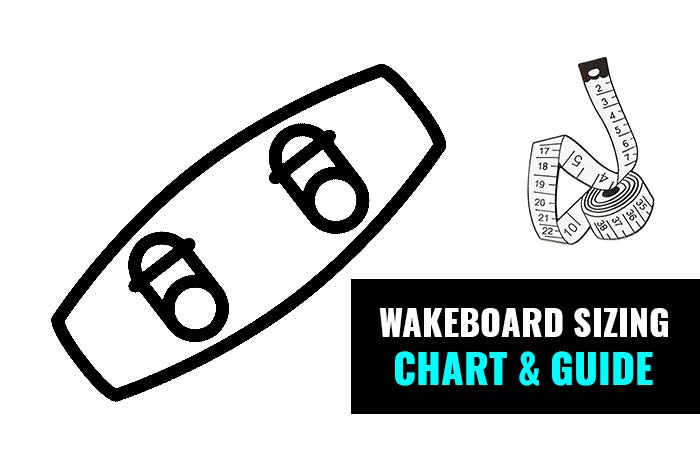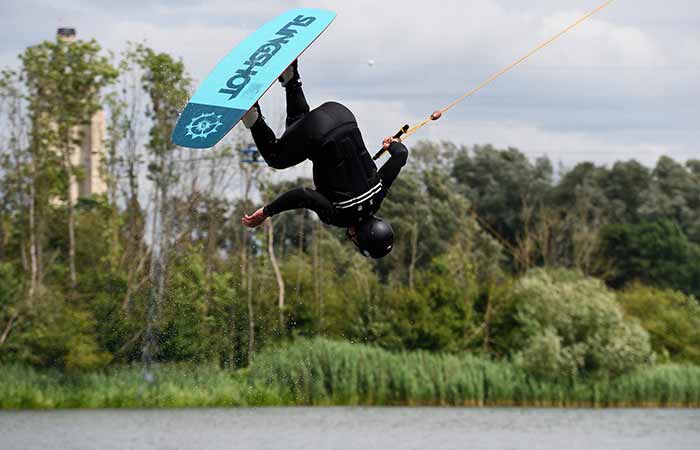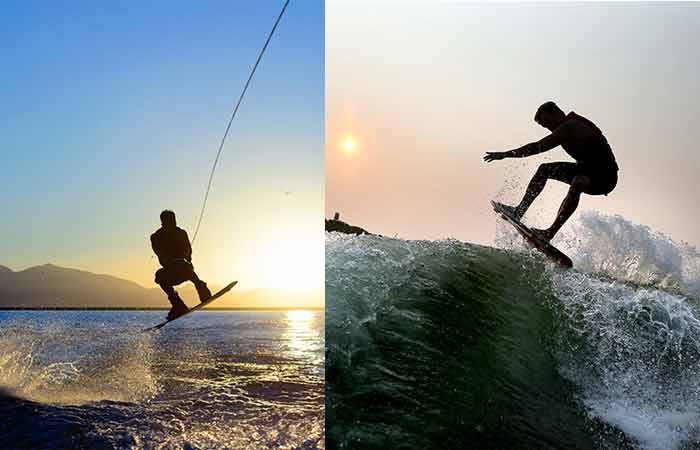How to Jump on a Wakeboard
If you’re ready to jump on your wakeboard, you likely have mastered the basics like balancing on the water, and precursor moves like crossing the wake and edging. This guide will help you master the basic wakeboard jump which is the basis of many of the more complex wakeboarding tricks
What Does Jumping on Your Wakeboard Entail?
Jumping on your wakeboard essentially means flying across a wake with your wakeboard, a move which you’ve probably seen seasoned wakeboarders execute. While there are various variations of wakeboard jumps, as a novice you should start with the basic wake jump.

A basic wakeboard jump entails getting air after gliding to the top of a single wake. Wakes are the fluffy waves created by your towing boat. The boat creates two streams of waves behind it on each side. You should start by jumping across one of these wakes and then move on to jumping from wake-to-wake.
How to Prepare for Wake Jump
Before you embark on jumping on your wakeboard, you should first be comfortable balancing on the water. You also should have grasped the basic wakeboarding moves like edging and crossing the wake.
With these skills, it’ll be easier for you to jump and you’ll reduce the number of times you wipe out as you jump. While you can pretty much jump successfully on your first try, it’ll take time and practice for you to learn how to jump smoothly.
How to Jump on Your Wakeboard
- Start by cutting out until you feel the boat towing you back.
- Then cut in toward the wake and let your tow rope pull you. Your knees should be slightly bent and your elbows should be tucked into your body; this position allows you optimum control and balance.
- Your rope should remain taut and it should be one to two inches from your front hip.
- Start soft and slow and gradually increase your pace by digging your toes and heels into the edge harder and harder as the rope’s resistance gradually increases. The goal is to hit the wake at maximum speed.
- As get closer and closer to the wake, you should learn against the rope further and further so that your board curves through the water.
- Once you hit the wake, extend your legs like someone trying to head butt a soccer ball; this move will help you gain as much height and distance as possible.
- As you fly off the wake, you should pull your knees close to the chest so that you ascend to the highest height possible.
- To maintain balance while airborne, lean back at about 45 degrees, hold the tow rope close to your waist, maintain the line tension, and then focus on your landing spot.
- You should then bend your knees as you land. If you land with your legs locked, the impact can jerk your joints and cause injuries.
- Maintain the same angle for a few minutes as you start to glide away, otherwise, you may tumble prematurely or catch an edge. With that, you’d have made your first wakeboard jump.
Tips to Perform High Jumps Fast
Following are some ideas and tips to master the art of jumping higher when performing tricks
Learn Progressive Edging to get Bigger Air
It’s incredible how seasoned wakeboarders generate enough thrust to make the spectacularly high and long jumps. You too can pull this off by mastering progressive edging.
Progressive edging essentially means that you glide towards the wake, starting with a slow pace and then increasing your speed gradually until you smash into the wake. To capitalize on progressive edging during your jumps, cut out and get a bit of slack on your tow tope. Then cut back in and glide towards the wake.
At first, go slowly but increase your pace by digging your toes or heels harder and harder into the edge as the rope’s resistance gradually increases. Go hard until you hit the wake with the highest momentum possible.
Glide at a Greater Speed and Push Off Hard for a Higher Jump
With this jump variation, you need immense leg power and your board should be super fast. To pull it off, glide away from the boat but don’t make a wide arc. Instead, cut back in at a sharp angle and ride heelside. Once you get atop the wake, use your legs to push off and launch yourself further.
However, with this jump, you’ll land outside the wake on the flat water. You’re therefore likely to lose balance. Besides, you’ll need to put more effort into controlling tension.
Use a Shorter Arch for Less Hang Time (Speed Jump)
This jump is ideal for jumping practice. It gets you across the wake quickly, even though you don’t gain much height.
To execute it, glide away from the boat. But before you get to the end of the arch, cut back in. You shouldn’t, however, push off as you hit the wake. Instead, maintain your balance and ride the heelside all through.
Executing a Beginner Jump Without Using Legs
Most beginners inadvertently make this jump. As a novice, you are likely to make a common wakeboarding mistake – relying only on thrust when trying to make a big jump. When you jump without forcefully pushing with your legs, however, you don’t gain considerable height. So with this jump, you need much more speed to make up for the lack of ‘leg power’.
This jump is especially useful to beginners as it allows them to practice board control. This is because, with this jump variation, you need to make a sharp cut toward the wake and ride heelside and so in time you get to improve your board control. So it’s a fantastic beginner jump, especially if you haven’t mastered timing your jumps.
To perform this jump, go as far from the wake as you can and then glide back. When you smash into the wake, unlike in other basic jumps where you extend your legs, you should remain in a crouch position till you land on the other side.
Jump Often
You can’t become a proficient wakeboarder if you have mastered jumping. For you to get to perform perfect jumps consistently, you need to practice for years. There will be numerous times when you land funky or take big falls, but if you keep practicing, in time, you’ll be jumping to mind bowing heights with ease.
Further Reading on Wakebording
- How to Wakeboard: A Basic Beginner Guide +Tips
- How to Get Up on a Wakeboard
- Wakeboard Tricks & Names: Easiest to the Hardest
- Wakeboarding vs Wake Surfing
- How to Pick the Right Wakeboard Size-Chart & Guide
- 7 Best Wakeboards + Buy Guide
- Best Wakeboard Life Jackets & Vests for Women, Men & Kids
- Best Wakeboard Bindings & Boots
- 7 Best Wakeboard Towers-What to look for when Buying






![7 Best Wakeboards + Buy Guide [2021]](https://aquaticglee.com/wp-content/uploads/2021/01/best-wakeboards.jpg)